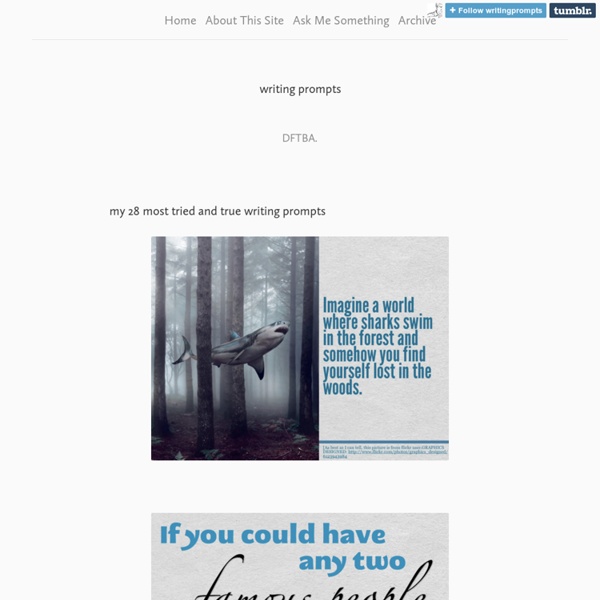



100 Exquisite Adjectives By Mark Nichol Adjectives — descriptive words that modify nouns — often come under fire for their cluttering quality, but often it’s quality, not quantity, that is the issue. Plenty of tired adjectives are available to spoil a good sentence, but when you find just the right word for the job, enrichment ensues. Subscribe to Receive our Articles and Exercises via Email You will improve your English in only 5 minutes per day, guaranteed! 21 Responses to “100 Exquisite Adjectives” Rebecca Fantastic list! Pixar’s 22 Rules of Storytelling | Aerogramme Writers' StudioPixar's 22 Rules of Storytelling These rules were originally tweeted by Emma Coats, Pixar’s Story Artist. Number 9 on the list – When you’re stuck, make a list of what wouldn’t happen next – is a great one and can apply to writers in all genres. You admire a character for trying more than for their successes.You gotta keep in mind what’s interesting to you as an audience, not what’s fun to do as a writer. They can be very different.Trying for theme is important, but you won’t see what the story is actually about til you’re at the end of it.
45 ways to avoid using the word 'very' Writers Write is your one-stop resource for writers. Use these 45 ways to avoid using the word ‘very’ to improve your writing. Good writers avoid peppering their writing with qualifiers like ‘very’ and ‘really’. According to Collins Dictionary: ‘Padding is unnecessary words or information used to make a piece of writing or a speech longer. Adding modifiers, qualifiers, and unnecessary adverbs and adjectives, weakens your writing. This post gives you 45 ways to avoid using the padding word ‘very’. Three Telling Quotes About ‘Very’ “Substitute ‘damn’ every time you’re inclined to write ‘very;’ your editor will delete it and the writing will be just as it should be. If you enjoyed this, you will love: Top Tip: If you want to learn how to write a book, sign up for our online course. by Amanda Patterson © Amanda Patterson
Exercises in Writing for Beginning Writers Instructor: Jim Manis Email: jdm12@psu.edu Exercises to Generate Creativity Copyright @ 2001 The Pennsylvania State University This site is devoted to offering as many exercises (and general good advise) for creative writing students who wish to avail themselves of them. The first rule to becoming a writer is to write REGULARLY. Keep a Journal: Many of us aren't sure what we should be writing about during that space we set up to write in every day. A journal can be physically made of anything that it is convenient for you to write in and carry around. Keep in mind that a journal is not a diary. Audience: Young writers sometimes make one of the two following mistakes: They either assume they are writing for everyone or that they are only writing for themselves. How then do you determine who you are writing for? Ready to try to some exercises? Click here to go to poetry. Click here to go to story writing.
12 Useful Websites to Improve Your Writing by Johnny Webber 1. Words-to-Use.com – A different kind of thesaurus. 2. OneLook.com – One quick dictionary search tool. 3. 4. 5. 750words.com – Write three new pages every day. 6. 7. 8. 9. 10. 11. 12.
This site has excellent prompts which can be used for writing or for discussion. by mheydt Jan 12